Everything You Need to Know About High Strain Dynamic Load Test in India
Engineers working on India’s enormous infrastructure projects now turn to High Strain Dynamic Load Test in India—think of tall buildings in Mumbai, vast metro systems in Delhi, or strong bridges across the Ganges. It’s a practical, no-nonsense way to check if deep foundation piles can handle the weight they’re supposed to carry without breaking the bank or slowing down construction. In a country where the ground beneath your feet can vary from squishy coastal mud to rock-hard Deccan basalt, High Strain Dynamic Load Test in India is like a trusty flashlight, revealing what’s going on underground. This blog breaks down what High Strain Dynamic Load Test is, how it’s done, why it matters, and where it fits in India’s construction boom.
Unpacking High Strain Dynamic Load Test: What’s the Deal?
Imagine yourself building a house and instead of a strong foundation you are piling it on flimsy poles. Scary, right? High Strain Dynamic Load Test prevents that nightmare by testing piles—those long columns driven deep into the ground—to ensure they’re tough enough. Unlike old-school static tests that pile on weight slowly, High Strain Dynamic Load Test slams a heavy hammer onto the pile and watches how it reacts.
The Nuts and Bolts of High Strain Dynamic Load Test
Here’s how it goes down: workers bolt strain gauges and accelerometers onto the pile, usually a couple of feet below the top to avoid surface noise. These gadgets feed into a Pile Driving Analyzer (PDA), a brainy little box that records how the pile shakes and strains under impact. A hefty hammer—sometimes weighing as much as a small car—drops from a height, smacking the pile with force. The drop height, anywhere from half a meter to three, is tweaked to get the right data without overdoing it. The PDA crunches the numbers, turning raw sensor data into insights about the pile’s load capacity and the soil’s behavior.
After the test, software like CAPWAP digs deeper, modeling how the pile and soil interact to estimate things like end-bearing strength and skin friction. It’s like a doctor reading an X-ray, but for dirt and concrete. Companies like Grimtech use top-tier PDA systems to ensure these tests are spot-on, especially for big-ticket projects like ports or high-rises. High Strain Dynamic Load Test in India thrives on this tech, making it a staple for builders navigating the country’s tricky soil conditions.
Where High Strain Dynamic Load Test Shines in India
On Indian roads, overpasses, metro projects in Bangalore and Chennai, and even oil rigs in the Arabian Sea, you can find it. Whether it’s the soft, muddy deltas of West Bengal or the rocky hills of Maharashtra, the test fits perfectly the varied topography of India. Unlike stationary tests that can drag on, it saves time by letting engineers test several piles in a day. It also helps to improve pile designs by reducing overbuilt foundations, so saving expenses. For projects when time and money are limited but safety cannot be sacrificed, High Strain Dynamic Load Test in India are absolutely essential.
Why High Strain Dynamic Load Test Wins Hearts (and Budgets)
Let’s talk perks. High Strain Dynamic Load Test is fast—think testing a dozen piles before lunch. It’s cheaper than static tests, which need heavy equipment and days of setup. The data it spits out is gold: it tells you how much weight the pile can take, how the soil resists, and whether the pile has any hidden cracks. This makes it a safety net for projects, catching weak spots before they become disasters. It’s also flexible, working on all kinds of piles and soils, from Gujarat’s clay to Kerala’s sand. And since it’s non-destructive, the pile is ready to roll right after testing. High Strain Dynamic Load Test in India is like a Swiss Army knife for builders—versatile, efficient, and safe.
The Tricky Bits
No method is perfect, and High Strain Dynamic Load Test has its quirks. If the sensors are slapped on wrong or the hammer’s too light, the data can be garbage. In India, some outfits still lean on outdated tricks like the Hiley formula, which can be off by a mile—think 200% errors. That’s a no-go for critical projects. The country’s wild soil variations, from Rajasthan’s loose sands to Tamil Nadu’s stiff clays, mean engineers need to be sharp when reading results. CAPWAP’s assumptions can also trip up newbies, so it takes a seasoned pro to get it right. High Strain Dynamic Load Test in India demands skilled hands and modern gear to avoid these pitfalls.
High Strain Dynamic Load Test vs. the Old Guard
Static load tests are the granddaddy of pile testing—slow, steady, and super accurate. Gradually piling up weight, they track the movement of the pile or its push back. Still, they are a headache requiring days of work, kentledge blocks, and cranes. Conversely, High Strain Dynamic Load Test is the scrappy younger sister—fast, lean, and good enough for most jobs. In India, where deadlines loom big, High Strain Dynamic Load Test in India is generally the first stage; stationary tests are held for last inspections on important piles. Eurocode 7 advises combining to save money and inspire confidence. With stationary testing, High Strain Dynamic Load Test in India provide a one-two punch for foundation dependability.
Tech That’s Changing the Game
High Strain Dynamic Load Test has gone high-tech, and India’s keeping up. Modern PDAs, like the PDA-8G, let engineers monitor tests from their laptops, even halfway across the country, thanks to tricks like SiteLink. CAPWAP’s number-crunching gives a detailed breakdown of pile and soil behavior, making guesswork obsolete. Smart devices avoid making changes by hand, which improves accuracy. These tools are very helpful in cities like Hyderabad and Pune, where new buildings and subways are being built all the time. Some teams even use software like ABAQUS along with High Strain Dynamic Load Test to make sure that all of the data are correct. In India, High Strain Dynamic Load Test in India is riding the tech wave to make building smarter and safer.
What’s Next for High Strain Dynamic Load Test in India?
India’s building like there’s no tomorrow—Smart Cities, bullet trains, wind farms, you name it. High Strain Dynamic Load Test in India is set to be a star player as these projects demand quick, reliable foundation checks. With the government pushing for sustainable construction, High Strain Dynamic Load Test’s ability to optimize pile designs will save materials and money. Specialized companies are stepping up and bringing cutting-edge tools and knowledge to the table. But the business world needs to keep teaching programmers how to use this technology correctly. High Strain Dynamic Load Test in India will be the key to building safe, strong foundations as India’s towns get taller and its infrastructure spreads out over more land.
Wrapping It Up
High Strain Dynamic Load Test isn’t just engineering trick; it’s a real way to help India reach its building goals. It gives quick, low-cost information about pile strength and dirt behavior in busy cities and along the coast. India will keep the High Strain Dynamic Load Test in India in the spotlight as it builds bigger and better things. This will make sure that every base can last. In India, the High Strain Dynamic Load Test in India isn’t just for checking piles; it’s also for making the future better and stronger.
FAQ:
1. What is High Strain Dynamic Load Test and how is it used in India?
High Strain Dynamic Load Test (HSDLT) is a non-destructive testing method used in India to evaluate the load-bearing capacity of deep foundation piles. It involves striking the pile head with a heavy hammer and measuring its response using sensors and a Pile Driving Analyzer (PDA). In India’s diverse soil conditions—from coastal clay to Deccan basalt—HSDLT offers quick, cost-effective, and reliable foundation analysis, making it a go-to method for metro rail projects, bridges, and high-rises.
2. How does High Strain Dynamic Load Testing benefit construction projects in India?
High Strain Dynamic Load Testing helps Indian infrastructure projects by providing rapid results on pile strength, reducing unnecessary overbuilding, and saving time and cost. Unlike static load tests, HSDLT allows testing of multiple piles in a single day. It’s especially useful in urban and time-sensitive projects where efficiency, accuracy, and safety are top priorities—like Smart Cities, expressways, and commercial developments.
3. Is High Strain Dynamic Load Test reliable for all types of soil in India?
Yes, HSDLT is highly adaptable to India’s varied geotechnical profiles. From Gujarat’s clay-rich terrain to the hard rock formations of Maharashtra, this test delivers dependable results when executed correctly with calibrated equipment and expert interpretation. Modern tools like CAPWAP and PDA-8G ensure accurate data, even in complex soil layers found in Indian metros and coastal regions.
4. How does High Strain Dynamic Load Test compare to Static Load Test in India?
While Static Load Tests are the gold standard for accuracy, they are time-consuming and expensive. High Strain Dynamic Load Test, on the other hand, offers a faster and more economical alternative. In India, it’s commonly used as a primary check, with static tests reserved for critical piles. When combined, as recommended by Eurocode 7, they provide a complete and confident foundation verification process.
5. What are the common challenges of High Strain Dynamic Load Testing in India?
Some challenges in India include sensor misplacement, incorrect hammer weight, or outdated analysis methods like the Hiley formula. Additionally, soil diversity across regions requires skilled engineers to interpret results accurately. Using advanced software like CAPWAP and proper PDA calibration is essential to overcome these issues and ensure reliable testing outcomes.



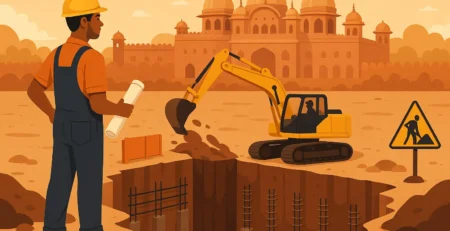
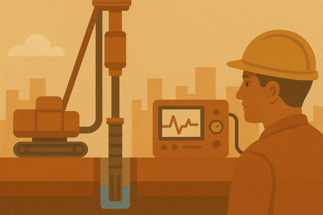

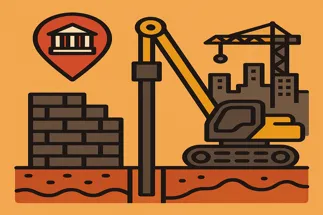

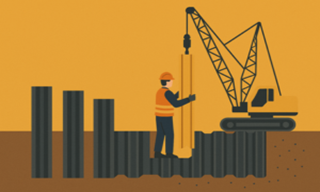

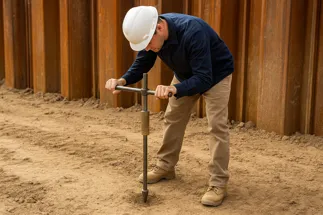
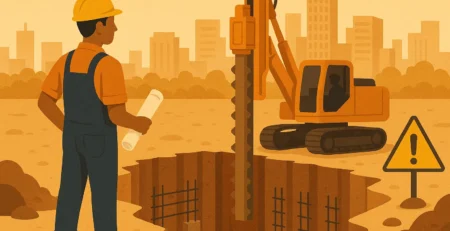
Leave a Reply